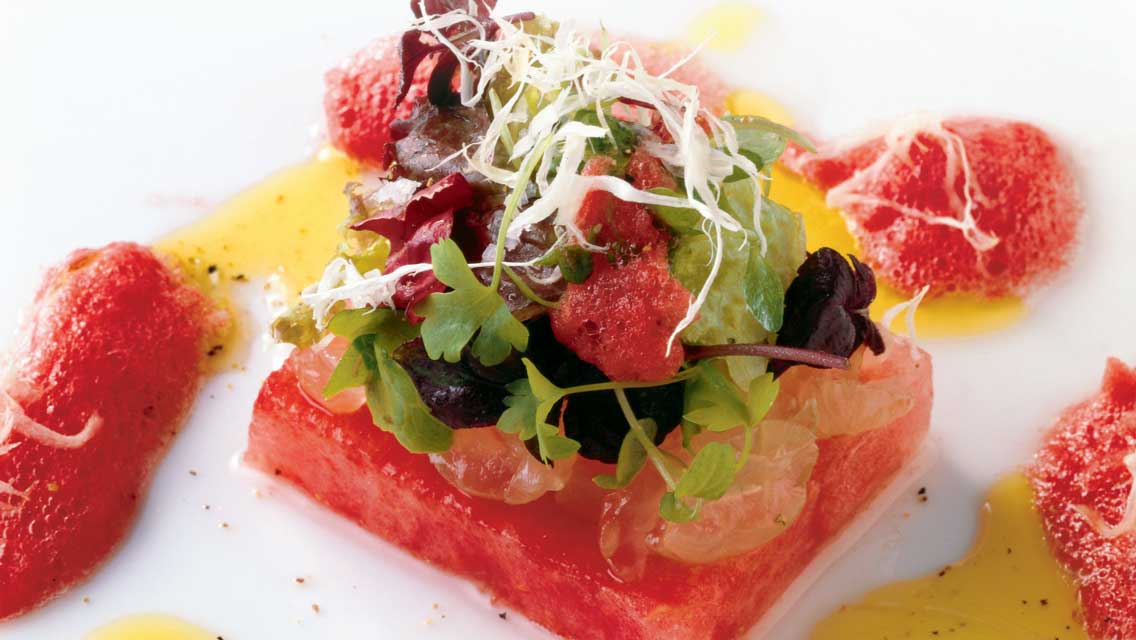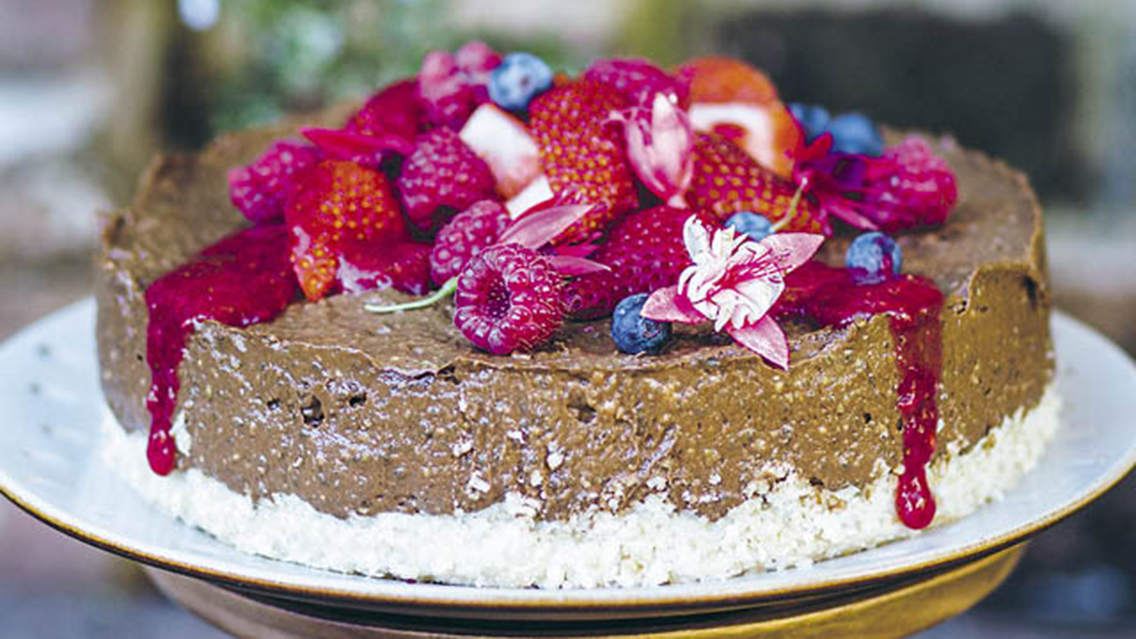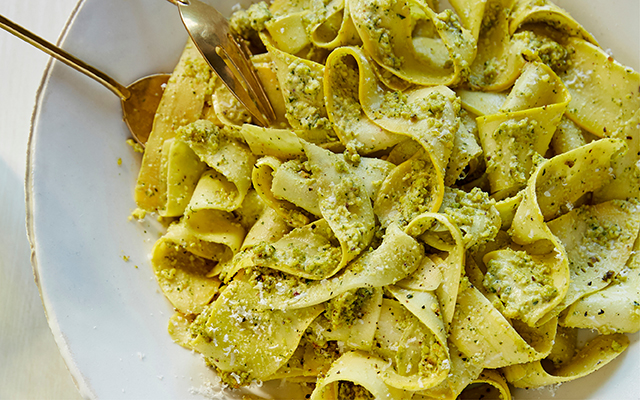Have you ever heard the story of beriberi? The disease ravaged Asian nations for generations. Scientists searched for years for the cause: Was it something infectious from the jungles? Adventurers headed out to investigate. In the end, the culprit was discovered right under their noses, in their very own rice bowls: Beriberi was actually just a vitamin-B1 deficiency caused by eating white (that is, refined) rice.
It turns out that sometimes the biggest discoveries – the boldest explorations – come not from heading into those far-off jungles, but from looking anew at the things that are right under our own noses.
Raw-food enthusiasts are engaging in a similar exploration, taking a hard look at the mostly cooked diets most of us have been subsisting on for generations. They’re asking: Could this stuff be healthier and more vitality supporting if it wasn’t cooked? What if the various diseases that ravage so many Westerners today – from allergies and inflammatory conditions to plain old fatigue – are all caused by something as innocuous as what white rice once seemed to the sufferers of beriberi? What if a large part of our health problems stem from cooking the food we eat?
Of course, if you’re not going to cook your food, most of your cookbooks become superfluous. That’s where Raw, by Charlie Trotter and Roxanne Klein, comes in. This book electrified the food world when it first came out in 2003, because the foods in it were of breathtaking beauty, and the preparation techniques outlined a whole new way of delivering food to plate, mostly via high-speed blender, food processor and food dehydrator.
Demand for Raw has been so great since then that a glossy paperback version was just published. It seems like the idea of raw foods is now ready for a mass market. In fact, chef Roxanne Klein is set to debut a line of raw foods at West Coast Whole Foods Markets this year.
“The most important thing for people to realize about raw foods is that there are amazing health benefits,” Klein explains. “Basically, anytime you cook any food, you denature the protein, and you end up with fewer vitamins and minerals in the food than you started with. Whether you’re talking about meat or vegetables, you get 50 percent of the proteins you would otherwise, and a loss of minerals and vitamins. When you eat raw, you feel a lot more energy because you’re getting more condensed nutrition from your food, and you’re not overeating [as many people do] as a result of being starved of nutrition.”
Raw-food enthusiasts assert that the natural enzymes that allow optimal digestion of food are destroyed once any food is heated above 118 degrees F. They also advocate strongly for the nutritional advantages of raw sprouted seeds and nuts. “A roasted nut is 75 percent fat and 25 percent protein,” says Klein. “But once you sprout it, that ratio reverses and becomes 25 percent fat and 75 percent protein. In nature, a squirrel will always bury a nut before he eats it – burying sprouts it, so that it has optimal nutrition. Squirrels have enzyme sensors in their noses, so they know when that nut has optimal nutrition.”
Of course, people have sensors in their mouths that tell them when foods have optimal deliciousness, and Klein puts primacy on that experience. “I’m a trained chef, and I feel that food is, above all, a celebration,” she says. “You really have to enjoy the foods you’re eating and the whole food experience. Of all the foods I prepare, I never think: ‘Let’s make something healthy.’ I think: ‘Let’s make something wonderful.'”
Klein and Trotter’s book is full of unspeakably beautiful dishes, like the Watermelon Salad recipe reprinted here. But it’s also full of dishes any home cook could easily master. For instance, there’s a simple pecan-maple “ice-cream,” made by simply sprouting pecans, puréeing them with maple syrup, sieving out the skins and then freezing (see recipe below). And there’s loads of realistic raw-food encouragement to get you started.
“I tell people: ‘If you can make half your plate raw, that’s an incredible start.’ That’s all I think anyone’s goal should be. Don’t do a denial thing; think of it as a celebration.”
A celebration, and an adventurous exploration into the things you eat every day – only now you can eat them raw. Sound crazy? Just remember, sometimes the boldest explorations and the biggest discoveries can be found right under your nose – in your very own bowl.
Watermelon Salad
Serves four
- 2 cups chopped red watermelon
- 4 pieces red watermelon, each 3 inches square and 1/2-inch thick
- 12 longans (a small, round Asian fruit known as “Dragon Eye,” available at most Asian markets), peeled, pitted and cut into eighths
- 1 cup assorted micro greens such as shiso, basil and chervil
- 4 tsp. freshly grated horseradish
- 2 tbs. extra-virgin olive oil
- Celtic sea salt and freshly ground pepper
Method:
Using a high-speed blender, process the chopped watermelon until it’s a medium-bodied liquid. Allow the juice to settle, about 10 minutes; a thick layer of froth will form on the top.
Place the watermelon squares on a work surface, and top each square with a single layer of longan pieces, covering each square completely.
Assembly:
Place a watermelon square in the center of each plate and arrange one-fourth of the micro greens over the longans. Sprinkle 1 teaspoon of the grated horseradish over the micro greens. Drizzle the olive oil around the plate and spoon some of the watermelon froth around the plate and over the greens. Sprinkle the remaining grated horseradish over the watermelon froth. Top with a little salt and pepper.
Carpaccio of Artichokes, Bleeding Heart Radish, Carrots and Golden Beets
Serves four
Preparation
Artichoke
- 1 artichoke bottom, choke and stem removed and bottom thinly sliced vertically
- 1 tbs. extra-virgin olive oil
- 1 tbs. freshly squeezed lemon juice
- Celtic sea salt and freshly ground pepper
Combine the artichoke, olive oil and lemon juice in a bowl, and toss to mix. Season to taste with salt and pepper.
Bleeding Heart Radish
- 1 small bleeding heart radish, peeled and sliced into rounds
- 1 tbs. yuzu citron juice
- 1 tbs. cold-pressed sesame oil
- Celtic sea salt and freshly ground pepper
- 1/4 tsp. freshly grated wasabi
- 2 tsp. grated, peeled apple
Combine the radish slices, citron juice and sesame oil in a bowl, and toss to mix. Season to taste with salt and pepper. Lay the slices flat. Mix together the wasabi and apple in a small bowl. Spread some of the mixture over each radish slice.
Carrots
- 1 carrot, thinly sliced on the diagonal
- 2 tbs. extra-virgin olive oil
- 2 tsp. red wine vinegar
- Celtic sea salt and freshly ground pepper
Combine the carrot, olive oil and vinegar in a bowl, and toss to mix. Season to taste with salt and pepper.
Golden Beets
- 1 small golden (yellow) beet, peeled and thinly sliced
- 1/2 tsp. finely minced, peeled fresh ginger
- 1/2 tsp. finely minced garlic
- 1/2 tsp. finely minced shallot
- 2 tbs. extra-virgin olive oil
- 2 tsp. rice wine vinegar
- Celtic sea salt and freshly ground pepper
Combine the beet, ginger, garlic, shallot, olive oil and vinegar in a bowl, and toss to mix. Season to taste with salt and pepper.
Garnish
- 2 tsp. fresh flat-leaf parsley leaves, cut into fine chiffonade
- 4 tsp. fresh micro mint leaves
- 1 tsp. chopped fresh dill
- 1 tbs. 1/2-inch-long-cut fresh chives
- Freshly ground pepper
Assembly
For each serving, arrange one-fourth of each vegetable on a small plate, overlapping the pieces and, in the case of the golden beet, rolling the slices into cones. Spoon any of the remaining juices from each vegetable on the respective vegetable. Sprinkle the parsley evenly over the artichoke, the mint evenly over the radish, the dill evenly over the carrot and the chives evenly over the beet. Sprinkle the vegetables with pepper.|
Heirloom Tomato Soup with Arbequina Olives and Shaved Fennel
Serves four
Preparation
Soup
- 2 large, red heirloom tomatoes, peeled and seeded
- 1/2 jalapeño chili, seeded and chopped
- 1/2 cup chopped, peeled cucumber
- 2 tsp. sherry wine vinegar
- Celtic sea salt and freshly ground pepper
In a high-speed blender, combine the tomatoes, chili, cucumber and vinegar, and process until smooth. Pass the purée though a fine-mesh sieve, and season to taste with salt and pepper.
Garnish
- 1 3-inch-long baby fennel, thinly shaved on a mandoline
- 12 arbequina olives, pitted and quartered
- 1/4 cup peeled, seeded and diced red tomato
- 2 tsp. brine from olives
- 2 tsp. sherry wine vinegar
- 1 tbs. extra-virgin olive oil
- 12 micro fennel sprouts or fennel fronds
Assembly
Ladle one-fourth of the soup into each bowl. Garnish with the fennel, olives and tomato. Drizzle the olive brine, vinegar and olive oil around the soup. Sprinkle with the fennel sprouts.
Red Bell Pepper Soup with Mango and Meyer Lemon
Serves four
Preparation
Soup
- 8 red bell peppers, seeded
- 1 tbs. horseradish juice
- Celtic sea salt and freshly ground pepper
- 1 tsp. maple syrup, if needed
In a heavy-duty juicer, juice the bell peppers. Discard the pulp, and measure out 4 cups juice. Combine the bell pepper juice and horseradish juice in a bowl, and stir to mix. Season to taste with salt and pepper. Taste, and add the maple syrup if needed to sweeten.
Mango Purée
- 1 mango, peeled, pitted and chopped
- 2 tbs. extra-virgin olive oil
- 1/4 tsp. powdered agar-agar
- 1 tsp. Celtic sea salt
In a high-speed blender, combine all the ingredients, and process until smooth. Pour into a bowl, cover, and refrigerate for one hour, or until slightly firm.
Garnish
- 12 Meyer lemon segments, supremed
- 4 tsp. micro fennel fronds
- Freshly ground pepper
Assembly
Ladle one-fourth of the soup into each bowl. Place 11 dollops of the Mango Purée and one-fourth the lemon segments around the soup. Sprinkle with the fennel fronds, and top with pepper.
Pecan-Maple Ice Cream
Preparation
- 2 cups pecans, soaked for eight to 10 hours in filtered water
- 1/2 cup maple syrup
Directions
Drain the pecans, reserving 1 cup of the water. In a high-speed blender, combine the pecans, the 1-cup water and the maple syrup, and process until smooth. Pass the purée through a fine-mesh sieve, and freeze in an ice-cream maker according to the manufacturer’s directions.
Recipes excerpted from Raw by Charlie Trotter and Roxanne Klein (Ten Speed Press, 2007).




This Post Has 0 Comments